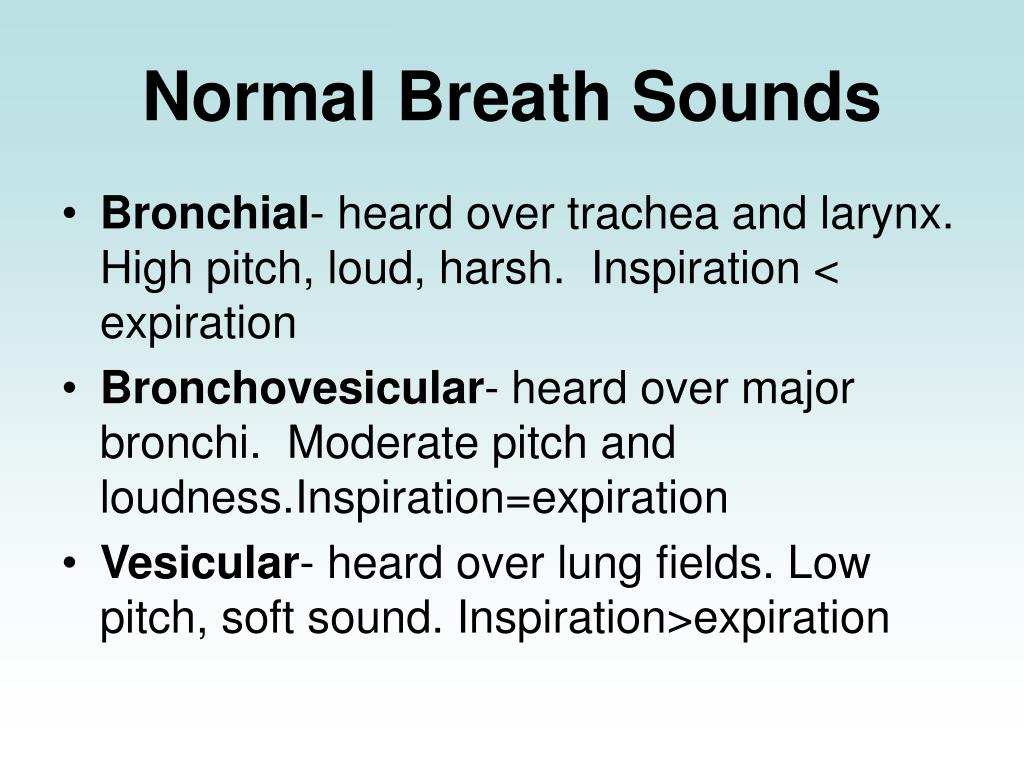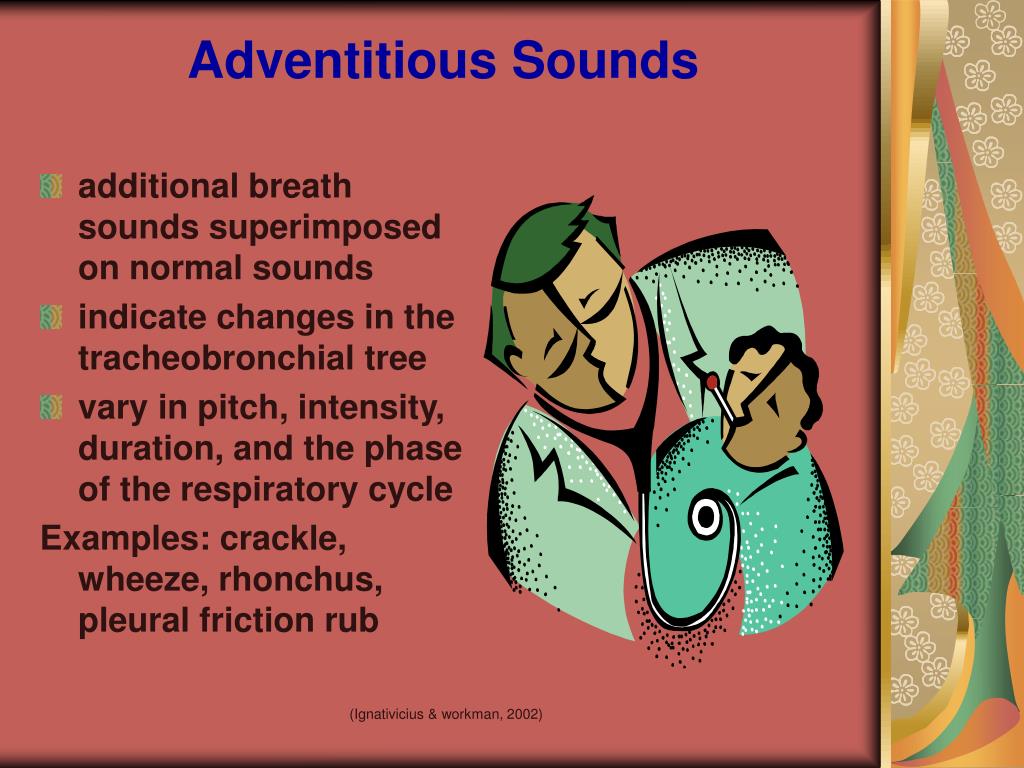

It occurs as the small airways collapse when a patient attempts to exhale, this collapse results from swelling in the airways from chronic or acute illness. Obstruction of the small airways within the lungs leads to wheezing, a high-pitched whistling sound, greatest on expiration, that is generally louder as you get further away from the mediastinum. Stridor is most commonly seen in young children who aspirate small objects and the elderly who have head/neck tumors that are leading to progressive obstruction.Īs stridor can indicate significant upper airway obstruction, the next best step in a responsive patient is to visually examine the oral cavity for obstruction then provide high-flow oxygen and raid transport with potential ALS intercept in the event of patient decompensation. Upper airway obstructions can lead to stridor, a high-pitched harsh-sounding whistle that is loudest when auscultating close to the mediastinum and neck. If you cannot auscultate breath sounds in an ill-appearing patient who has chest rise it is reasonable to assume that effective breathing is not occurring, and high-flow oxygen or positive pressure ventilation may be required. The absence of bilateral breath sounds can indicate a lack of breathing or poor air movement while absent breathing is obvious from lack of chest rise, poor air movement can occur in many diseases (asthma, pneumonia, airway obstruction). But in elderly or ill patients this condition can be rapidly fatal.

In young individuals, there may be minimal other symptoms to indicate the presence of these potentially deadly conditions due to the ability of the second lung to compensate. The presence of absent or unequal sounds in one side of the chest is a common finding in pneumothorax and/or hemothorax.
#Define three types of adventitious breath sounds free#
The presence of equal bilateral breath sounds indicates that both lungs are inflating equally with a given breath, which means the airways leading from the mouth to alveoli are likely to be intact and the chest cavity is free from air/blood that would prevent lung expansion. The presence of breath sounds over both sides of the chest is an essential element of the "A" in the ABCs. Inspiration to expiration length ratio is 3:1, or longer: shorter. (Over the trachea, in contrast, the breath sounds are high-pitched and loud over the mainstream bronchi, between the scapulae, and below the clavicles they are medium-pitched sounds-a combination of vesicular and bronchial-called bronchovesicular sounds.) Normal breath sounds over the lung fields are called VESICULAR breath sounds: low-pitched and soft. This section will begin by reviewing the importance of hearing bilateral breath sounds followed by defining and describing stridor, wheezing, crackles, and several special sounds that may appear on an exam.īreath sounds should be assessed in three locations, the apex of each lung (right above the clavicle), the mid lung (mid sternal), and at the bases (Roughly at the level of the xiphoid process). Regardless of these practical limitations, the description of breath sounds is a vital component of many national registry exam questions and may help guide your care in the field.

In the EMS setting the detailed analysis of breath sounds can be restricted by environmental noise, time constraints, and limitations to patient mobility. During both the rapid assessment of a patient's ABCs and the head-to-toe secondary survey the assessment of the patient's breath sounds via auscultation is vital to the recognition and treatment of several emergencies.


 0 kommentar(er)
0 kommentar(er)
